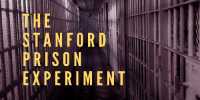Creativity is a complex and multifaceted concept, and there is some debate among experts about whether creativity can be trained or not. However, there is evidence to suggest that certain strategies and techniques can enhance one’s creative abilities.
Researchers have developed a new method for teaching people to be creative, one that appears to be far more effective than current methods of stimulating innovation. Based on narrative theory, this new method encourages people to be creative in the same way that children and artists do: by making up stories that imagine alternate worlds, shift perspective, and generate unexpected actions.
The narrative method works by recognizing that we are all creative, according to Angus Fletcher, a professor of English and a member of The Ohio State University’s Project Narrative.
“We as a society radically undervalue the creativity of kids and many others because we are obsessed with the idea that some people are more creative than others,” Fletcher said. “But the reality is that we’re just not training creativity in the right way.”
We as a society radically undervalue the creativity of kids and many others because we are obsessed with the idea that some people are more creative than others. But the reality is that we’re just not training creativity in the right way.
Angus Fletcher
In a recently published article in the Annals of the New York Academy of Sciences, Fletcher and Mike Benveniste, both of Project Narrative, discussed the narrative method of training creativity. The narrative approach was successfully used by the two researchers to train members of the United States Army’s Command and General Staff College. Based on his methods, Fletcher created a publicly available training guide for officers and advanced enlisted personnel.
They have also collaborated with the University of Chicago Booth School of Business, the Ohio State College of Engineering, and a number of Fortune 500 companies to teach creativity to their employees and students. The current foundation of creativity training is the divergent thinking technique, which has been in use since the 1950s. It is a “computational approach” to creativity that treats the brain as a logic machine, Fletcher said.
It works through exercises designed to, among other things, expand working memory, foster analogical thinking and promote problem-solving. But divergent thinking hasn’t delivered the results that many hoped for, Fletcher said. A major issue is that its computational approach relies on data and information about the problems and successes of the past.
“What it can’t do is help prepare people for new challenges that we know little about today. It can’t come up with truly original actions,” Fletcher said. “But the human brain’s narrative machinery can.”

Many of the techniques used by writers to create stories are used in the narrative method of creativity training. One method is to imagine new worlds. Employees at a company, for example, might be asked to consider their most unusual customer and then imagine a world in which all of their customers were like that. What impact would that have on their business? What would they have to do in order to live?
Perspective-shifting is another technique. A company executive may be asked to solve a problem by thinking like another member of their team. The point of using these techniques and others like them, according to Fletcher, is not that the scenarios you imagine will actually happen.
“Creativity isn’t about guessing the future correctly. It’s about making yourself open to imagining radically different possibilities,” he said. “When you do that, you can respond more quickly and nimbly to the changes that do occur.”
According to Fletcher, the narrative approach of training creativity through storytelling is similar to how young children are creative – and research shows that young children are more imaginatively creative than adults. According to studies, children’s ability to perform creative tasks declines after four or five years of schooling. Children begin intensive logical, semantic, and memory training at this age.
According to Fletcher, the narrative approach to creativity can help people rediscover the creativity they may have lost as they progressed through school. One advantage for companies that train their employees to be creative is that they no longer need to seek out “creative people,” he says.
“Trying to hire creative people causes problems because the people identified as creative by leaders are almost always people who are similar to themselves. As a result, it encourages conformity rather than originality “Fletcher explained. “It is preferable to hire a diverse group of individuals and then train them to be creative. This fosters a culture that recognizes that there are already creative people in your organization who are underutilized.”
Fletcher and his colleagues have begun a more formal evaluation of this narrative method of creativity training, which has already received positive feedback. They are running randomized controlled trials of the creativity curriculum on over 600 United States Army majors enrolled in the Command and General Staff College.
In addition, they are continuing to collaborate with new organizations, such as the Worthington Local School District in Ohio. “Teaching creativity is one of the most useful things you can do in the world,” he says, “because it is simply coming up with new solutions to problems.”
According to Fletcher, this new method of training creativity “It could only have come from Project Narrative at Ohio State. The focus of Project Narrative is on how stories work in the brain. It is the foundation upon which we built this new way of thinking about and training for creativity “He stated.
“And Project Narrative is proof of the power of imagination. It is something that was created by Ohio State and would not have existed otherwise.”















